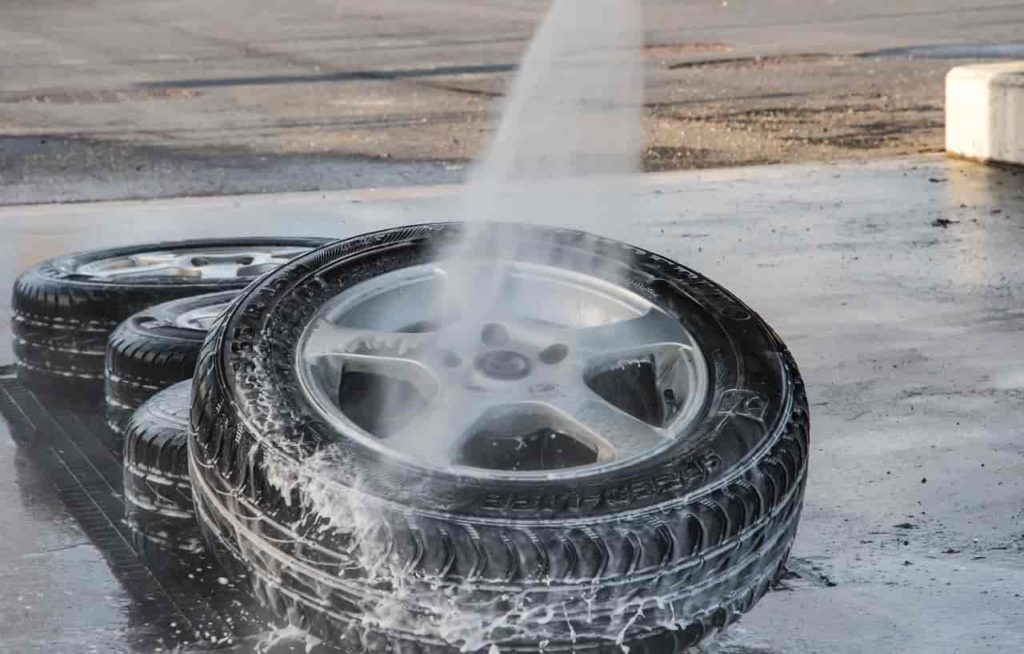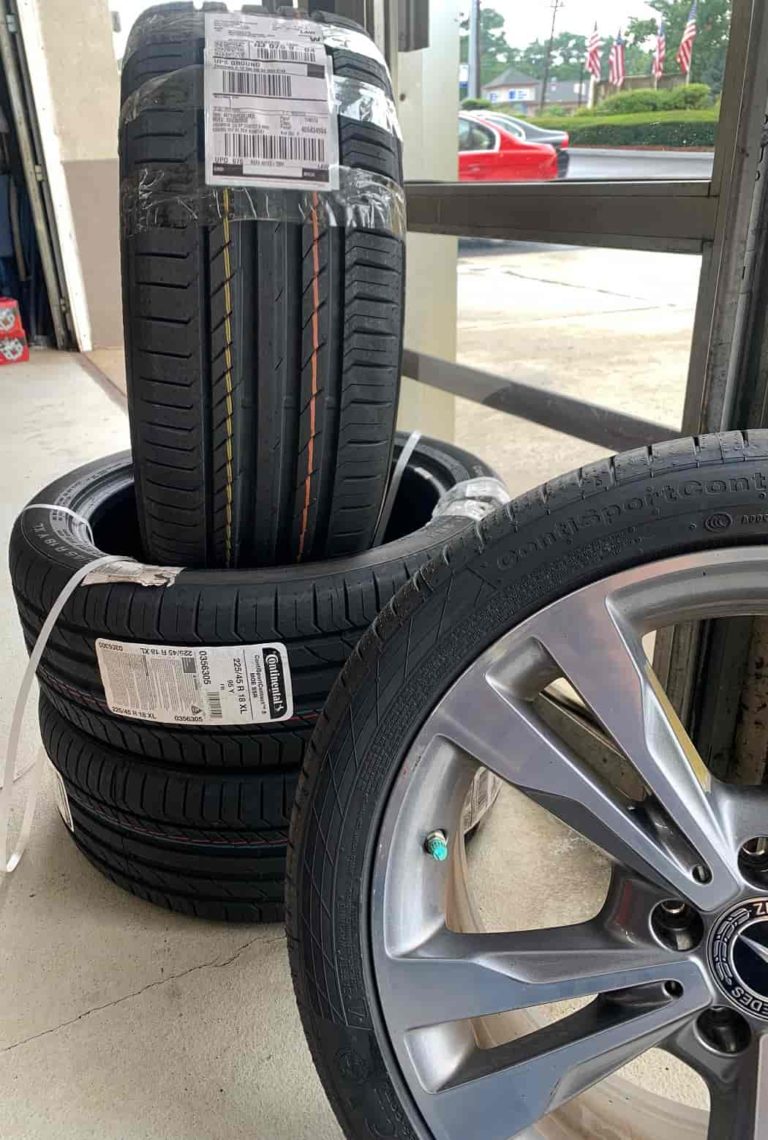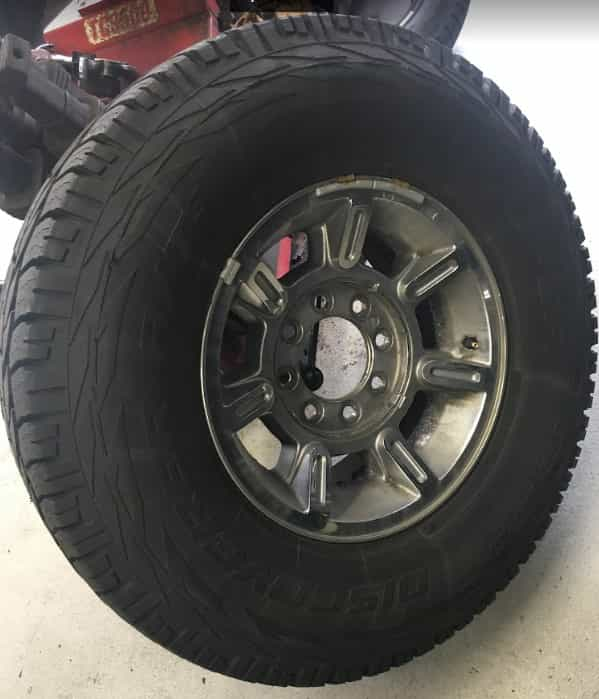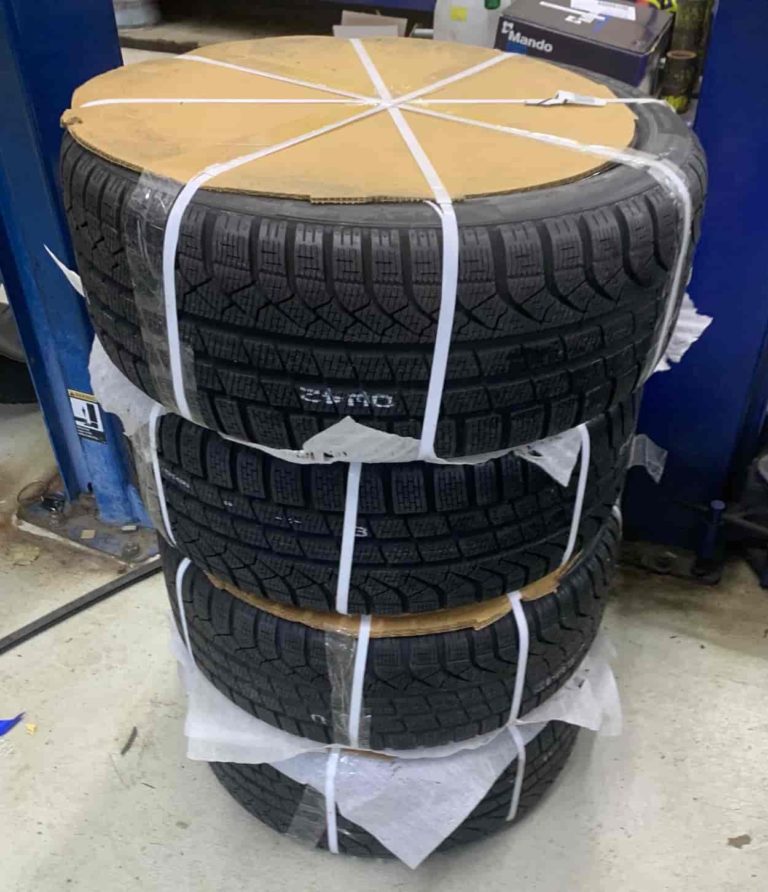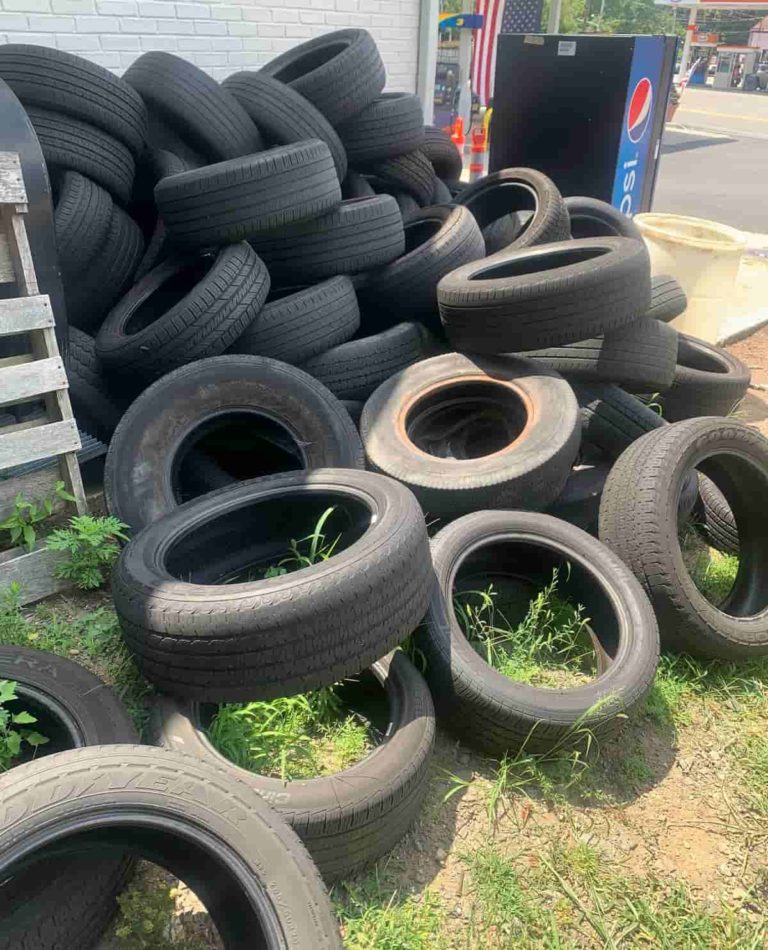The Importance of Tires in the Automotive Industry
Automotive tires are an essential component of any vehicle. They are the only part of a car that comes into contact with the road, making them crucial to the vehicle’s safety, performance, and overall driving experience. A good set of tires can provide better handling, improved fuel efficiency, and a more comfortable ride.
On the other hand, worn-out or damaged tires can lead to decreased traction on wet roads, reduced braking ability, and even a blowout while driving. The importance of automotive tires in today’s world cannot be overstated.
With millions of cars on the road every day worldwide, tire manufacturers have a critical role in ensuring that drivers have access to high-quality products that meet their needs. From racing slicks to all-season models designed for everyday use on city streets or highways, there are many different types of automotive tires available for consumers.
A Brief History of Tire Manufacturing
Tire manufacturing dates back to the early 19th century when people began experimenting with various materials to create durable wheels for their horse-drawn carriages. Natural rubber was discovered as an excellent material for tire production in 1839 by Charles Goodyear after years of experimentation.
However, it wasn’t until 1888 when John Dunlop developed the first practical pneumatic tire that modern-day tire production began. In 1908 Henry Ford revolutionized tire manufacturing further by introducing assembly line production techniques for cars. This drove demand rapidly upward from then on, leading to great leaps forward like steel belted radial technology introduced by Michelin in 1946 which marked an increase from bias ply designs.
Today’s methods and materials used in tire manufacturing have evolved significantly over time; they combine artistry and science at every stage. From sourcing raw materials and mixing through curing processes that turn the disparate elements into the finished product. Tire design has come a long way from early practical uses of rubber to today’s tire that is engineered for precise performance specifications.
Raw Materials
Rubber Compounds
Rubber is the main component of a tire, and it can be either natural or synthetic. Natural rubber comes from the sap of rubber trees, while synthetic rubber is made in a laboratory.
The composition of the rubber compounds used in tires varies depending on factors such as the type of vehicle, expected road conditions, and desired performance characteristics. Natural Rubber (NR) has excellent elasticity and tear resistance properties that make it ideal for use in tire manufacturing.
It also has low rolling resistance which produces good fuel efficiency. However, natural rubber is less resistant to heat than synthetic rubber.
Synthetic Rubber (SR), on the other hand, are made by polymerizing monomers into long chains to produce different types of rubbers with varying degrees of durability and elasticity. Synthetic rubbers used in tires include Styrene-Butadiene Rubber (SBR), Butyl Rubber (IIR), Polybutadiene Rubber (PBR), Halobutyl Rubbers (CIIR,BIIR) among others.
Reinforcing Materials
Rubber alone cannot provide enough strength or rigidity for a tire to function properly under various driving conditions. Therefore reinforcing materials such as carbon black, steel cords or polyester cords are added to improve tire stability, strength, and durability. Carbon Black is a fine powder derived from petroleum that increases the tensile strength and wear resistance of rubbers when added at high concentrations during the mixing process.
Carbon black also manages heat away from critical areas which improves heat dissipation. Steel Cords are used in radial tires where they run perpendicular to the direction of travel along with belts beneath the tread area providing reinforcement against lateral forces encountered during cornering at high speeds.
They are highly durable due to their strength under tension and puncture resistance but expensive compared to polyester cords. Polyester Cords provide the strength in bias-ply tires where cords run diagonally across the tire.
Polyester cords are easy to work with and provide better ride comfort but less durable than steel cords. The choice of raw materials used plays a significant role in determining tire performance characteristics.
Balancing factors such as durability, elasticity, and strength is important to achieve desired results. The diversity of materials used provides a wide range of options for different types of tires suitable for various driving conditions and vehicle types.
Tire Manufacturing Process
Mixing and Milling of Raw Materials
The tire manufacturing process begins with the mixing and milling of raw materials, such as rubber compounds and reinforcing materials. The purpose of this process is to create a uniform mixture that will be processed later into various tire components.
Banbury mixers and two-roll mills are two common machines used for this process. A Banbury mixer is a machine that uses an internal rotor to mix different types of rubber compounds together, producing one consistent mixture.
The internal rotor scrapes the sides of the mixing chamber, ensuring that all materials are blended thoroughly. Two-roll mills work by feeding plastic or rubber into two horizontally-opposed rollers, which then crush and knead the material until it becomes a homogeneous mass.
Bead Wire Preparation and Assembly
Bead wires are an essential component in tires as they provide structure around the bead area, allowing tires to maintain their shape during use. The bead wire preparation process consists of wire drawing and bead winding processes. In wire drawing, metal wires are pulled through a series of dies with decreasing diameters to reach the desired diameter needed for tire manufacturing.
Afterward, they go through cleaning processes before being wound onto spools in preparation for bead winding. During bead winding, several strands of pre-cut wire are wrapped tightly around a mandrel to form a continuous ring known as the tire bead.
Tire Building Process
The tire building process involves combining various components manufactured from previous steps to form a complete tire. One such component is the inner liner – a thin layer made from butyl rubber or other synthetic material that forms an airspace between the tire casing and air-filled cavity. After applying inner liners, next comes ply applications. This is where layers made from cords encased in rubber compound are applied over each other diagonally at specific angles on top of inner liner applications. This is followed by belt applications, where layers of cords are placed over the ply application.
The sidewall is then applied to the tire’s outer perimeter, providing protection for the inner components. The tread is applied, which provides traction and grip to the tire’s surface.
Curing Process
In order to give tires their final shape and strength, they undergo a curing process. In this process, a green tire is placed into a heated mold with specific pattern designs to be imprinted on it. The mold’s internal pressure and temperature are controlled using steam or hot water to ensure that all components bond together into a single unit.
Mold design plays a crucial role in producing high-quality tires. It impacts factors such as tire uniformity, ride comfort and noise level.
After curing, tires are trimmed of excess flash material and inspected for any defects before moving on for further testing. This whole process creates complex automotive tires that are essential for safe driving conditions on various types of terrains.
Quality Control Measures
Automotive tire manufacturing is a complex process that requires strict quality control measures to ensure that the final product meets all necessary safety and performance regulations. In this section, we will delve into three main quality control methods used in the tire manufacturing industry: visual inspection, x-ray inspection, and uniformity testing.
Visual Inspection for Defects
Visual inspection is a crucial process in the tire manufacturing industry as it helps identify any visible defects on the surface of the tire. The inspection is carried out by trained professionals who use visual aids such as magnifying glasses, mirrors, and cameras to check every part of the tire’s exterior surface. The areas inspected include the tread area, sidewalls, bead areas, and inner liners.
During visual inspections, experts check for various defects such as cuts or tears on the surface of the tire. They also look for any blisters or bubbles that may have formed during curing or vulcanization.
Other issues they inspect include sidewall bulges or deformations at rim flange areas. If any defects are detected during visual inspections, technicians mark them using ink spots so that they can be repaired before moving onto further stages of production.
X-Ray Inspection for Internal Defects
X-ray inspection is another critical quality control measure since it helps identify internal defects that cannot be seen through visual inspections alone. This process involves passing X-rays through cured tires to detect imperfections such as voids, inclusions (pieces of dirt), or other irregularities within each layer of rubber inside a tire. The X-ray machines used in this process generate images that help professionals evaluate structural integrity better than with traditional methods alone.
The X-rays create an image on film or digital media showing each layer’s thickness and composition. Through this method, manufacturers can identify potential problems early on without having to disassemble tires entirely for inspection.
Uniformity Testing for Consistency
Uniformity testing is another crucial quality control measure that manufacturers use to ensure the tire’s overall consistency and performance. This process involves examining the tire’s rolling characteristics, weight, and balance. During uniformity testing, experts test the finished product on a computer-controlled machine that rotates the tire at high speeds.
The equipment measures any possible variations in tread depth or sidewall profile, as well as radial or lateral force variation (RFV/LFV). This information helps identify any deviations from industry standards and regulations.
Overall, all of these quality control methods help ensure that all tires produced are safe, reliable, durable, and meet necessary performance standards. Through these rigorous processes, manufacturers can produce high-quality tires with consistent quality control standards across each stage of production.
Conclusion
Summary of Tire Manufacturing Process
The manufacturing process of automotive tires is a complex and multi-step procedure that involves several raw materials, machinery, and quality control measures. The process begins with the mixing and milling of rubber compounds with reinforcing materials such as carbon black and steel cords. Bead wires are drawn and wound onto the beads, followed by the tire building process where multiple plies, belts, sidewalls, and treads are applied.
The tires are then cured under heat and pressure in molds to form their final shape. The quality control measures used in tire manufacturing ensure that each tire meets high standards for safety, performance, consistency, and durability.
Visual inspections are conducted to identify any external defects while X-ray inspections help detect internal defects such as air pockets or foreign objects. Uniformity testing is performed to ensure consistency in weight distribution around the tire circumference.
Future Trends
The future of tire manufacturing is focused on developing sustainable solutions that reduce waste and environmental impact. One trend is using renewable raw materials such as soybean oil or orange oil instead of petroleum-based products in tire production. Another trend is exploring new recycling methods to repurpose used tires into new products or energy sources.
In addition to sustainability efforts, technology advancements are shaping the future of tires as well. Smart sensors embedded within tires can monitor tread wear and inflation levels in real-time for improved safety on the road.
3D printing technology may also revolutionize how tires are manufactured by allowing for more customization options based on individual driving needs. Overall, while the manufacturing process may remain complex, innovation will continue driving improvements in both sustainability efforts and technological advancements to create safer, more efficient automotive tires for drivers around the world.
